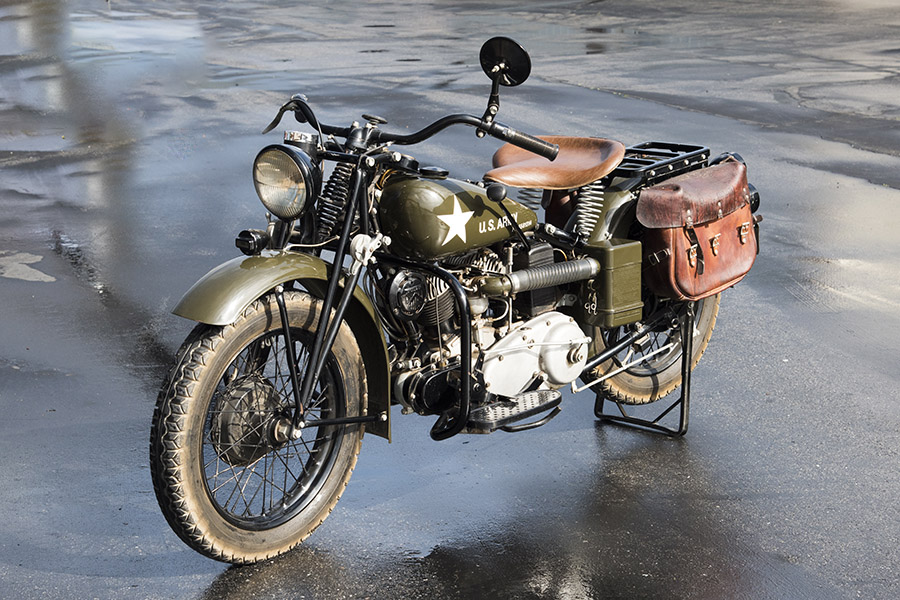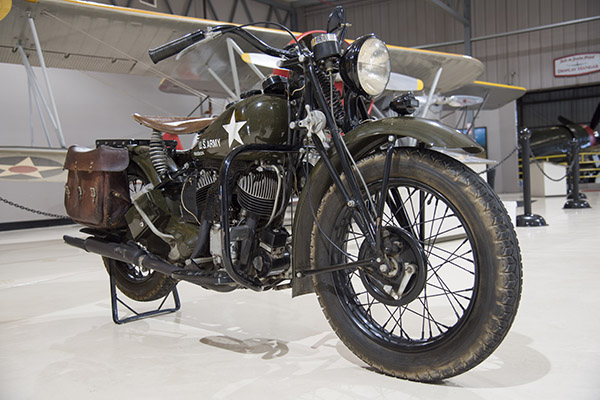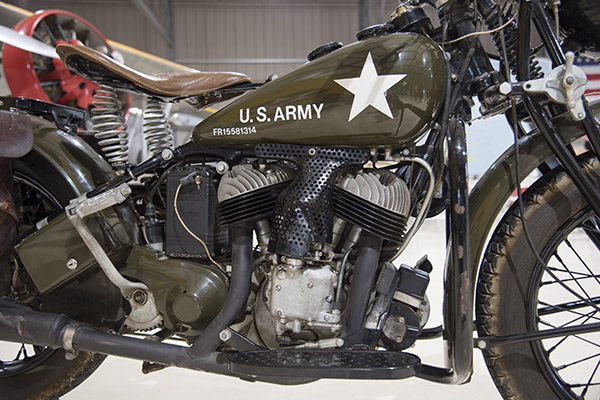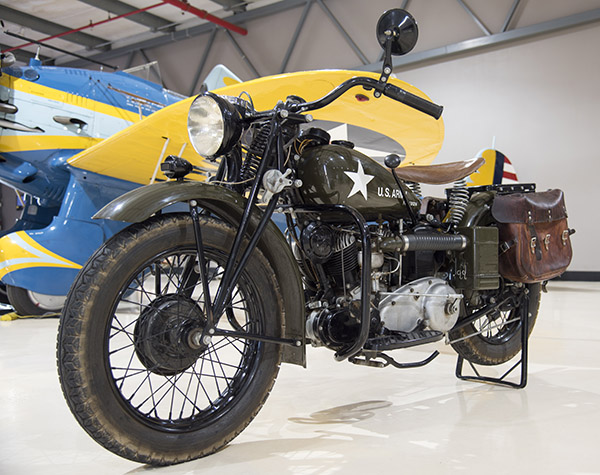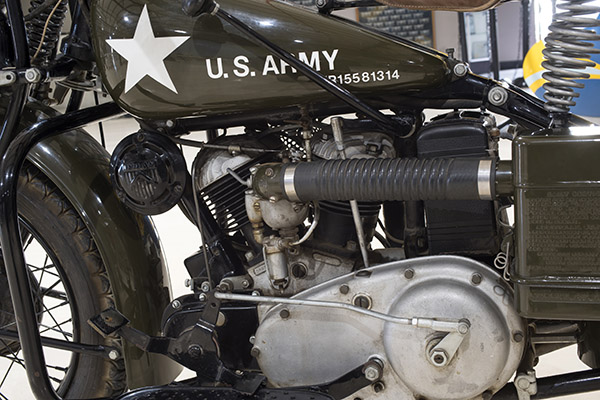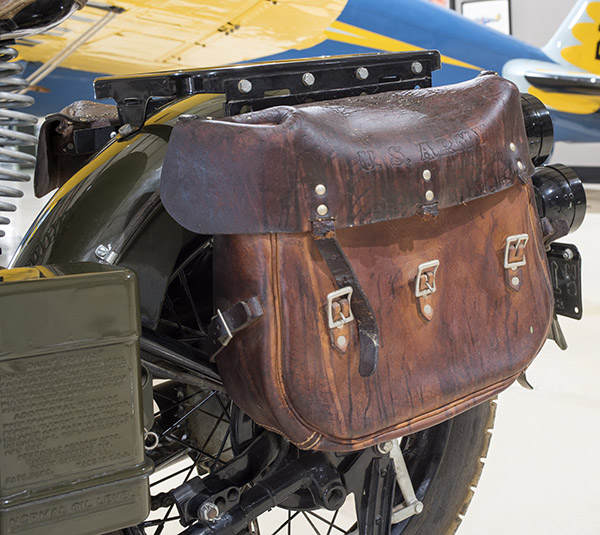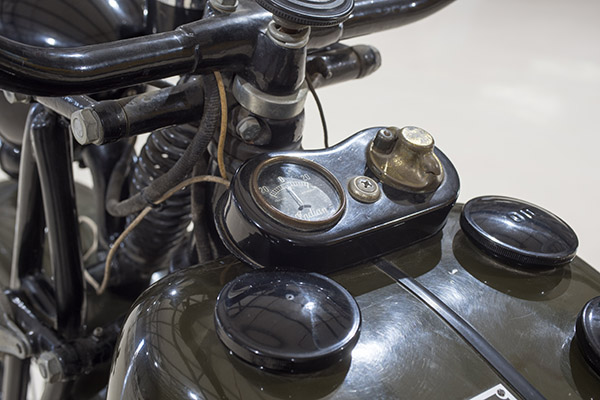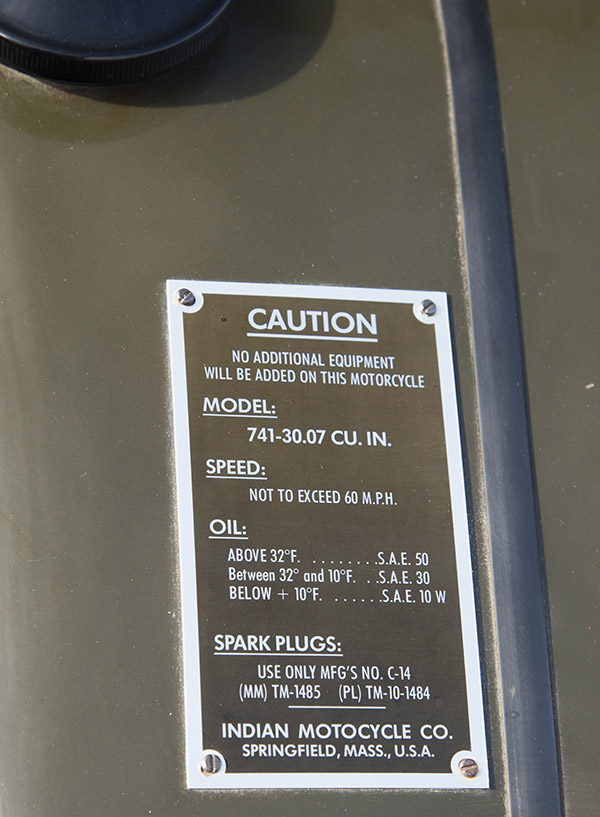I didn’t start out wanting a Kawasaki Z1. I’m more of a H2 750 triple guy. We were renting a house 10 miles south of Alamogordo, New Mexico and my job was to find a place to buy. Land is cheap in New Mexico and I wanted lots of it. 150 acres was the low-end of what I considered a decent spread.
Tinfiny Ranch’s 5 measly acres with a tiny shack was overpriced by about 50% and after checking the place out I told the real estate agent no dice. I did tell him I was interested in the old Kawasaki leaning against the side of the shack. A call was made to the daughter who inherited Tinfiny and a deal was made. Zed was mine.
 Zed came with no title, two Emgo café farings (one color-matched!), three seats, a box full of parts, a repair manual and any other bits I could find digging through the little junk-filled storage area next to the bike. Zed’s chain was rusted and the bike was difficult to push. I used a come-a-long to winch the thing up into the truck and hauled the mess back to our rental place.
Zed came with no title, two Emgo café farings (one color-matched!), three seats, a box full of parts, a repair manual and any other bits I could find digging through the little junk-filled storage area next to the bike. Zed’s chain was rusted and the bike was difficult to push. I used a come-a-long to winch the thing up into the truck and hauled the mess back to our rental place.

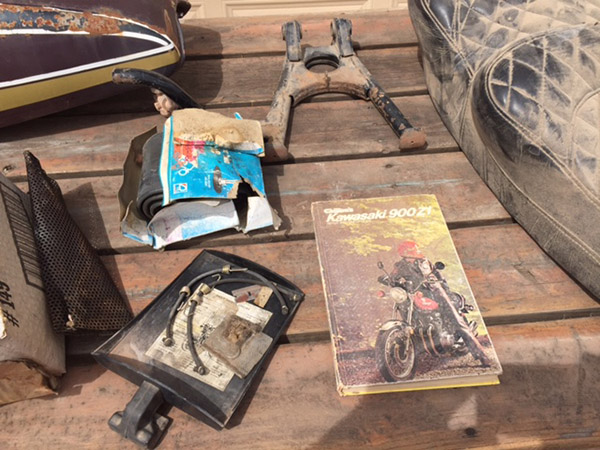
 Then they sold the place we were renting. CT (my wife) found another rental in Tularosa, 10 miles north of Alamogordo and we hauled all the junk we had accumulated, including Zed, to the new joint.
Then they sold the place we were renting. CT (my wife) found another rental in Tularosa, 10 miles north of Alamogordo and we hauled all the junk we had accumulated, including Zed, to the new joint.
A year had passed since I bought the Kawasaki and the bike was sitting in a storage trailer waiting for motivation on my part. The bike had no title so I wasn’t gung ho about the whole magilla. I mean, it wasn’t an H2, you know?
We were still looking for a place to call our own when the agent who had shown us Tinfiny Ranch called and said the seller was really lowering the price. CT and I went back out and looked the place over again. Tinfiny had electric service (not activated) a water well (broken), a septic system and a horrific wreck of a shack. It was only 15 miles from CT’s work. We figured what it would cost to make Tinfiny into what we wanted and worked our way back to a price. The agent said no way would the daughter take our offer and of course she did. I hauled the Kawasaki right back to where I had originally gotten the bike. Zed was back home.
Buying Tinfiny Ranch turned out to be a good thing because the rental we were living in also sold and we only had a few months to get the shack into a less distressed condition. There was no time to mess with Zed. I had the shack functioning at a first grade level in time to run off to China with Berk. CT moved all our junk and herself into the shack while I was gone. A more resilient wife you will never find.
Tinfiny has required massive amounts of sweat equity in the two years since we moved into the shack. In that time I walked Zed through New Mexico’s lost title maze and managed to get a shiny new title for a little over 150 dollars. Now the bike was mine: body and soul.
Having a title changed my relationship to Zed for the better. What was once a parts bike to be broken down and sold on the internet became a real motorcycle. I looked at the bike with a new appreciation for the classic lines and meaty, overhanging engine. The bike has stance. It is easy on the eyes with no hard edges or inorganic folds. It is a beautiful industrial product that has transcended the commercial realm and now resides in the empire of art.
 Yeah, I’m gonna fix it, but not a restoration, that’s for people who can’t accept a missing eye on an old teddy bear. Life leaves scars. This will be a repair, a salvage operation to get Zed back on the road. I don’t know how long it will take but I know now is the time to start. At this point in my life I’m in no rush and it looks like Zed isn’t going anywhere either.
Yeah, I’m gonna fix it, but not a restoration, that’s for people who can’t accept a missing eye on an old teddy bear. Life leaves scars. This will be a repair, a salvage operation to get Zed back on the road. I don’t know how long it will take but I know now is the time to start. At this point in my life I’m in no rush and it looks like Zed isn’t going anywhere either.

